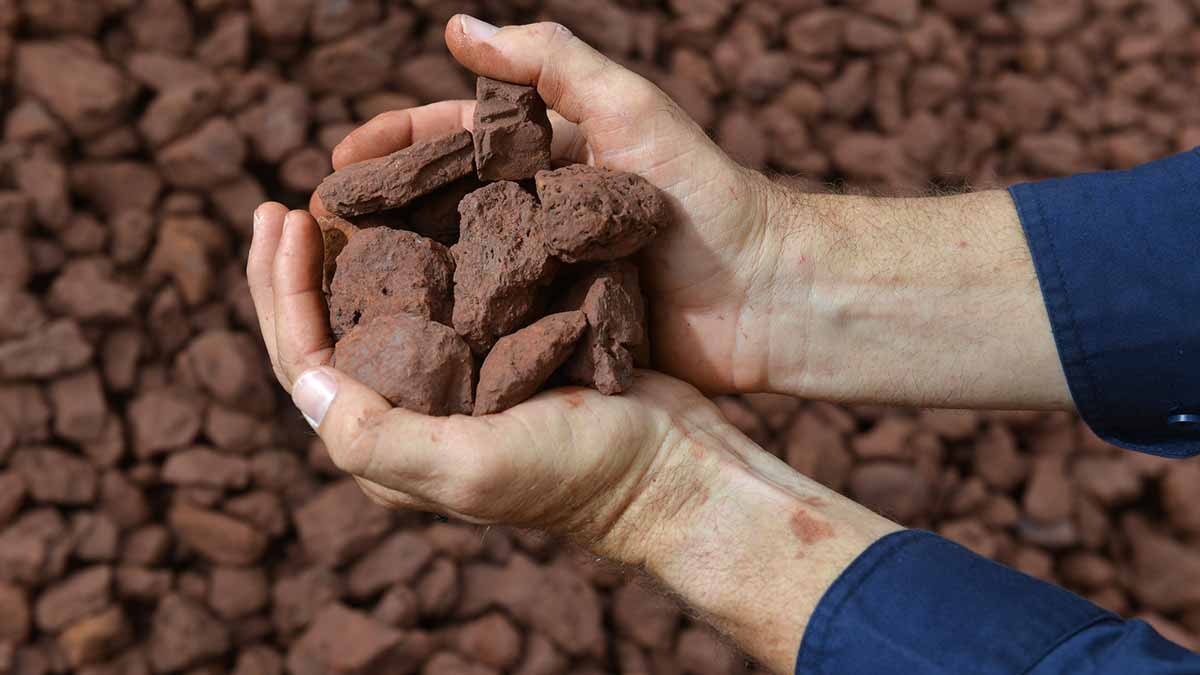2020 vision: 5 key trends to watch in iron ore markets, for this year and beyond

(Getty Images)
Iron ore prices are coming off a wild year in 2019, when supply shocks helped drive prices to all-time highs above $US125 ($182) per tonne.
By the end of the year, markets had begun to rebalance and prices for benchmark 62 per cent fines dipped back below the $US90/t mark.
But while many analysts forecast prices to recalibrate around $US80/t, so far this year they’ve been pretty resilient in the mid-$US90/t range.
It makes for an interesting year in 2020, as major producers look to offset last year’s falls, while the big consumers — China and India — assess alternative solutions both domestically and abroad.
In view of that, it’s good timing for an industry outlook piece on the sector by research firm Wood Mackenzie.
Analysts at the company have just released their latest research report, highlighting five interesting trends to watch in the sector, both in 2020 and beyond. We’ve summarised the key information below:
1. Vale giveth, Vale taketh away
As market watchers would know, the primary catalyst for last year’s price rally was a supply-side crunch in the wake of the Vale dam tragedy in Brazil on January 25.
But Wood Mackenzie research director Paul Gray said that there could be more surprises in store from Vale — except this time in the opposite direction.
The Wood Mackenzie team expects Q1 exports to be strong, paving the way for a total increase of 30 million tonnes (mt) in 2020.
If it comes to fruition, half of 2019’s 60mt reduction will be recovered in the space of one year. And Wood Mackenzie expects Vale to return to its peak production levels from 2018 (385mt) as soon as 2021.
“This is to the credit of the rapid repair and recovery program underway at the company’s key hubs in Minas Gerais,” Wood Mackenzie said.
2. Keep an eye on China
Long-known as the world’s biggest importer of iron ore, China does have some domestic reserves (but mainly lower grades) that it relies on to meet production targets.
With the dramatic fall in seaborne supply last year, Wood Mackenzie said Chinese iron ore production increased by 30mt in 2019. But in line with their view that seaborne supply will pick up sharply, the analysts don’t expect a similar production increase from China in 2020.
“Chinese concentrate production will remain broadly stable in 2020 with no significant displacement occurring until 2021,” Wood Mackenzie said.
However, there’s more upside risk than downside when it comes to Chinese production. Specifically, the downside risk from stringent environmental standards has been somewhat alleviated, “now that mine operators have upgraded equipment and improved technical efficiency”.
3. Indian surprise?
China’s biggest regional neighbour also has pretty large iron ore requirements itself. But similarly to China, India is making efforts to reduce its reliance on imports by boosting domestic production, and it will be another key trend worth watching in 2020.
Wood Mackenzie said industry watchers should keep an eye on the lease-auction process for 18 working mines which had the collective capacity to produce around 80mt per year.
The auctions are scheduled for completion by early February, and should provide “a good indication of potential production shortfalls”, Wood Mackenzie said.
4. Higher grades, lower premiums
Historically, the annualised price spread between benchmark grade iron ore (62 per cent fines) and higher-grade 65 per cent fines has averaged around 12 per cent.
However, Wood Mackenzie said it expected steel margins to stay under pressure in 2020, while benchmark iron ore prices were holding above current forecasts.
As a result, “there is risk of further steel margin compression, limiting the scope for higher premiums for high-grade ore”, the analysts said.
In the long run, Wood Mackenzie still expects steel mills to shift their preference to higher grade ore at the expense of lower grades. However, this could also give rise to increased alumina during the melting process, which can weigh on overall production.
“Watch out for rising alumina penalties and falling silica penalties,” Wood Mackenzie said.
5. African influence
Looking longer term, the analysts pointed to the potential influence of the Simandou iron ore mine, located in the West African nation of Guinea.
Last year, its new Chinese owners announced that Simandou had the capacity to produce 100mt per year of high-grade iron ore, and was scheduled to go into production by 2025.
Wood Mackenzie’s Gray said that for a mine of that scale in that location, five years was an optimistic timeframe. In addition, the market may struggle to absorb the extra supply, which will make it difficult to achieve an adequate return on investment.
However, the lead partner in the project — China Hongqiao Group — has already established itself as a key player in Guinea. And in the end, the mine’s prospects could ultimately be driven by China’s desire to reduce its reliance on iron ore imports from Australia and Brazil.
Instead, it could look to “increase captive ownership of iron ore resources in a country where China already has considerable influence”, Wood Mackenzie said.
UNLOCK INSIGHTS
Discover the untold stories of emerging ASX stocks.
Daily news and expert analysis, it's free to subscribe.
By proceeding, you confirm you understand that we handle personal information in accordance with our Privacy Policy.








